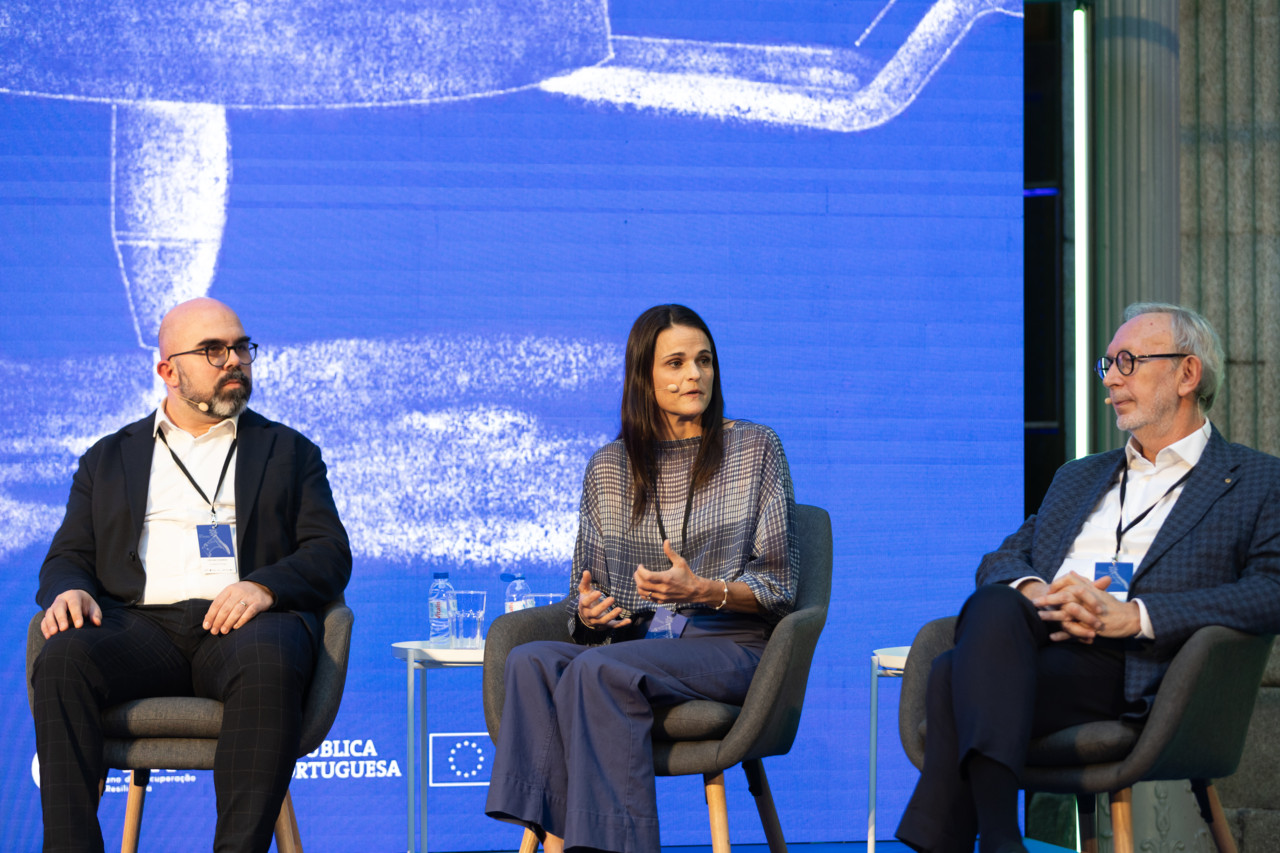
Sole moulding: innovation is chasing lightness, less chemicals, more recycling
Gas, co-moulding and recyclable thermoplastics: at Simac Tanning Tech 2025, the sole sector shows where innovation is really heading.
Keep reading...
May 2025

On 7 May in Milan, the Luxury Summit of Il Sole 24 Ore took stock of new concepts of luxury and fashion. We talk about sustainability, high quality and excellence, protection of the supply chain and training incentives, but also new needs for uniqueness and belonging.
2024 has been a difficult year for fashion in general and for Made in Italy itself, for reasons ranging from geopolitics to the increase in raw material prices, to changes in consumer habits. And 2025 does not start under the best auspices, with a turnover that according to the Fashion economic trends of Camera della moda will stop at 96 mld, ie – 5.3%, with even stronger declines for clothing, shoes, leather goods (while the other sectors such as eyewear, beauty and jewellery are positive). The appointment with the Luxury Summit of Il Sole 24 Ore was an opportunity to question the present and especially the future of a sector, such as fashion, which seems to be called today to reinvent itself, increasingly in an eye for uniqueness and high quality.
Quality is at the heart of luxury
This is the concept that Fabio Tamburini, Director of Il Sole 24 Ore, strongly emphasized at the opening of the work: “luxury is one of the pillars of the Italian manufacturing industry. And I didn’t say the big fashion brands. This is because luxury has as its great strength the chain of very high specialties that guarantees an exceptional quality, true strength of Italian luxury”. A concept also reinforced by Federico Silvestri, Managing Director of Gruppo 24 ORE, who said that the fascination of Made in Italy lies precisely in the quality of the product. Hence also the overcoming of the problem of duties introduced by the USA: “We remember – said Tamburini – that the world is big and that closed a door, opens a door: the Middle East for example, but also Europe, India, East Asia. It is necessary to take the case back in hand and go discover new markets, as was done in the past”.
The new luxury is sharing and belonging
As always very ‘disrupting’ the position of Silvio Campara, CEO of Golden Goose, a brand that has recorded enviable growth rates, which boasts two factories and 265 owned shops and is present in 74 countries around the world. Campara started from a fact: “Today the so-called ‘luxury’, that is all products sold from 500 euro up per transaction, It loses 50% in acquisition (acquisition of new customers) and 37% in retention (customer loyalty). 85% of this ‘luxury’ should be represented by the 16-45 generation, which in reality represents only 7-8%. Why? Because this target generation no longer has the needs and dreams of the previous ones”. If, in the past, life was marked by stages to be reached – first the study, then the career, and gradually they put aside money to buy the house but also the symbols of these achievements achieved, – the luxury watch, the beautiful car, the signed dress, etc. , today with the advent of mobile phones, the mechanisms that previously fed the so-called ‘desire industry’ have been completely overturned. “Today everything is temporary, today the coolest thing lasts at most three days, and there is no more frenzy of waiting”. That’s why, says Campara, shows and collections no longer interest anyone. Today the consumer no longer needs to ‘appear’, he needs to ‘belong’, because all those who were the great idealistic poles of the past – religion, politics etc – have failed.
The consumer no longer wants to be considered as a mere spectator – so I organize the mega event, the super show, you come, see the collection, you fall in love with it and go home happy and ready to buy -. The consumer today wants to be heard in his needs, he wants to build a relationship with the brand side by side. This is the secret of the success of Golden Goose: sharing with the consumer a culture, the culture of the search for the best self-expression. “Today you have to go from selling a product, to inspiring the consumer. People want a corner where they can decide. The consumer is not a spectator, he is part of a relationship. The product is not made for us, but for others. You have to train the empathic aspect”. An example? “Ralph Lauren, a brand that has recorded + 88% in the stock market in the last 5 years and +33% in the last 24 months. Did you change anything from the formula of the Madison Avenue house in autumn and the Hamptons house in summer? No! He did a small thing though, he created inside all the stores a little corner where the consumer feels at home, where he can drink a good coffee. And boom! “.
The supply chain at its centre
Sergio Tamborini, President of Confindustria Moda Federazione Tessile e Moda, recently signed the final text of the new national collective labour agreement, Highlighted the importance of protecting a sector that has been underestimated by government policy until now and which has its beating heart in the supply chain: “Beyond the glamorous aspect of fashion shows, fashion is the country’s second largest manufacturing facility and has a total trade balance of 30 billion, with 60% of exports. Yet, politics has always considered fashion a second-rate sector, perhaps because its realities were too small to be heard, as it was in the automotive industry. The country still lacks an industrial policy for the fashion sector. The risk, at this stage, is to lose parts of the supply chain and if this should happen, we risk losing the entire supply chain”. In this framework, he stressed, emerges the importance of the renewal of the national collective agreement, to defend and for the relaunch of the production chain of textile clothing fashion.
Also Giovanna Ceolini, President of Confindustria Accessori Moda, highlighted how the awareness of the importance of the fashion sector for the country of Italy and as missing a protection of such a unique and fundamental supply chain. “The French fashion chain is no longer there, while the Italian one has been able to overcome deep crises such as that of Covid. Yet there is no protection of any kind, there are no technical figures. We must invest in training but also protect small businesses and this is what we are trying to do as an association, to be stronger interlocutors at the table with politics”.
The importance of the supply chain was also stressed by Carlo Capasa, President of the National Chamber of Italian Fashion, who said that in Italy the brand and the supply chain are one. “Italian fashion puts creativity at the centre and makes marketing flow from it, not vice versa as happens outside national borders. But creativity is only possible because the companies are geographically close to each other and communicate with each other: this is the supply chain. And the Italian chain is unique in the world. This is the creativity that has made us famous in the world, and we must preserve it. That’s why the brands produce in Italy”.
The problem of training
Stefania Lazzaroni, General Director of the Altagamma Foundation, reported on the experience of ‘Adopt a school’ by Altagamma, a training project involving 60 large brands (from Moncler to Boffi to Ducati) that have ‘adopted’ a technical vocational school, with the aim of protecting and enhancing the supply chain. “Currently in Italy the need for manufacturing talent is about 240 thousand people in seven different sectors that Altagamma represents (fashion, design, food, hospitality, engines) but only 50% of this need will be met due to the disaffection of young people and training gaps”.
Small brands to relaunch the sector
Massimiliano Bizzi, President and Founder of White, highlighted the importance of developing and supporting small brands as a lever for relaunching the entire sector: “I find that today fashion has moved away from the consumer, fashion is now ‘little fashionable’. We must realize that there is low cost and that there is a need for novelty, but not in the sense understood in the past. Retail is in difficulty all over the world and buys less than it used to be. Ostentation no longer works. And fashion must know how to observe society and respond to change. Today society is about food, travel, and low cost”.
Bizzi also reported on the experience of White, who celebrated 25 years of success and who changed the way to be proud, focusing on scouting and supporting niche and research brands. “We try to understand which is the right brand for that type of market, unlike most other fairs that welcome companies that request it or those proposed by associations. White, on the other hand, does a deep work of research and scouting around the world”. Bizzi also stressed the importance of physical meeting between people even in business: “All of us need to still have human contact. And this is the philosophy of Purple, the new initiative we are carrying out with Fieramilano: an inclusive event, in balance between digital and physical, inspired by the Fuorisalone of the design week”.
Fashion and artificial intelligence
Andrea Ruzzi, Head of Consumer & Manufacturing Industries at Accenture Italy, explored how AI is changing the fashion world by making work faster, easier and less expensive. “For example, in e-commerce systems the use of agents capable of making recommendations to consumers has increased product conversion by 15-20%, while in marketing, The hybrid photo shooting has created greater consumer engagement thanks to the contextualization of the product created by AI. Without forgetting the prototype, where artificial intelligence has reduced costs and time, with a benefit also for the environment related to the reduction of waste”. The next step, Ruzzi recalled, is artificial intelligence agentica: “for example, if I want to go on a trip, I go to Chatgpt and tell him what I want to do and my interests. I will have a structured plan, a structured list of possible actions, but in the agency AI is taken over by another agent that operates interactively, and who goes to look at which flights can be suitable for my trip, and then match the flights of the hotels and as it interacts with me according to my preferences to build a tailor made trip”. But the further development of AI are the physical robots, which are already being worked on, equipped with spatial consciousness to interact with their environment and able to act autonomously.

Gas, co-moulding and recyclable thermoplastics: at Simac Tanning Tech 2025, the sole sector shows where innovation is really heading.
Keep reading...
The final panel of the "Welcome to the Factory of the Future!" conference brought together leading figures from the European footwear and textile industry to discuss reindustrialisation. Between real opportunities and regulatory obstacles, the debate highlighted an uncomfortable truth: the rules of the game are not the same for everyone.
Keep reading...
The FAIST panel brought together international experts to discuss innovation, automation and the central role of the human factor in the factory of the future.
Keep reading...You must login to read this free content
This content requires a subscription to view. Are you already a subscriber? Sign in